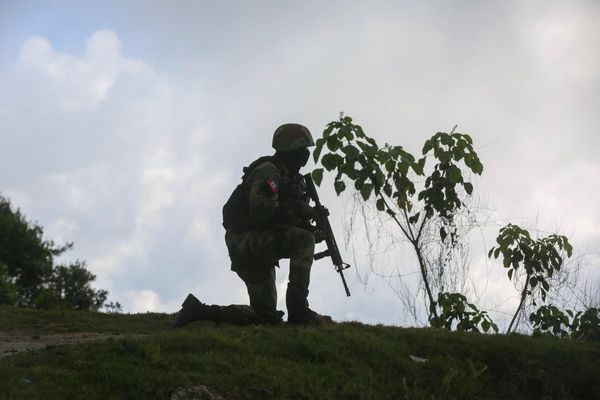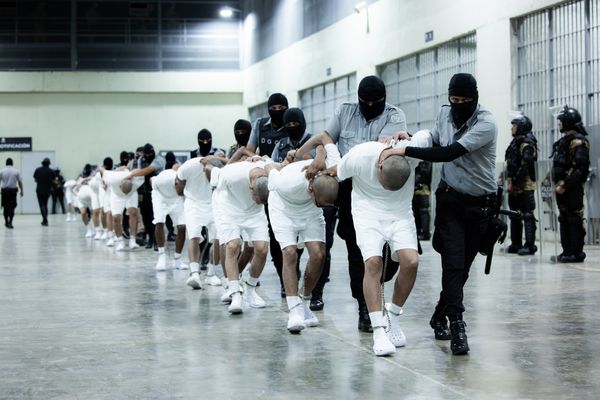
Its walls are made of crumbling concrete and covered in graffiti, its windows shattered or stolen, and the landscape it was built to oversee has long since been dug up and carted away.
But this derelict shell in a corner of rural Hampshire, once a wartime RAF watching station, is so rare and important that it must urgently be saved, according to building conservation campaigners.
The Landmark Trust, which rescues at-risk historic buildings, has launched an appeal to save the ruined watch office at the long-forgotten site of what was once RAF Ibsley, close to the New Forest. Hastily built from pre-cast concrete in the darkest days of 1941 and overlooking three runways, the airbase played a crucial role in RAF and US air force missions across the Channel.
Similar watch stations were thrown up across the country, but rarely with the innovative combination of concrete promenade and huge Crittall windows at the “special” Ibsley site, according to Caroline Stanford, the trust’s historian. The Ibsley building is now thought to be unique of its type; more than 80 years on, it is astonishing that it has survived at all, she says.

The base even witnessed some wartime movie-star glamour when Leslie Howard, fresh from appearing in Gone with the Wind, cast David Niven to star alongside him in 1941 in the patriotic Spitfire movie The First of the Few, which was filmed at RAF Ibsley.
The trust, already custodian to more than 200 historic properties across the UK and overseas, had been consciously looking out for wartime buildings in peril when it was directed to Ibsley by airfield researchers. It was delighted to find a building that, regardless of its fraught history and derelict current condition, still had its own beauty, said Stanford.
“It’s got an almost modernist feel to it, to me. You know, whoever designed it may have been churning things out in the watch office, but you feel they had a good eye. As we see it today, it looks pretty miserable and defaced. But our vision is that we can bring it back to that wonderful, light-filled space again.”
The building itself may be unique, but it is what now surrounds it that could prove critical in its salvation. After the war, Ibsley’s runways fell into disrepair and were eventually dug up for gravel; the pits that were left have since filled up as a network of small lakes, and been colonised by lush grass and woodland.

It’s quiet, beautiful and, crucially, a lovely place where one might want to take a holiday. As with its other properties, the trust wants to rent out the renovated watch station as a four-bedroom holiday house (complete with a resident population of bats that cannot be moved from one of the rooms).
“Finding a financially viable future for our buildings is at the heart of what Landmark does,” said Stanford, though community open days will ensure it is not only accessible to paying guests.
The trust has a lot of money to find first. Early donations and a sizeable grant mean it has already raised more than half of the £3.1m it expects the renovation to cost; that still leaves a target of £1.3m to be found.
It’s an awful lot of money for one small building, but Stanford said it was more important than ever to preserve the rare and fragile ruins still standing from the second world war.
“From a national point of view, it’s incumbent on all of us to remember our past and learn the lessons for the future,” she said. “I think everybody has a connection with world war two, through their fathers, their grandfathers, their great-uncles, or their mothers and grandmothers who kept the home fires burning – we all have some kind of connection.
“And that makes this recent past in many ways more resonant than the airy-fairy Elizabethan age, however wonderful the [buildings from that period] are.”







